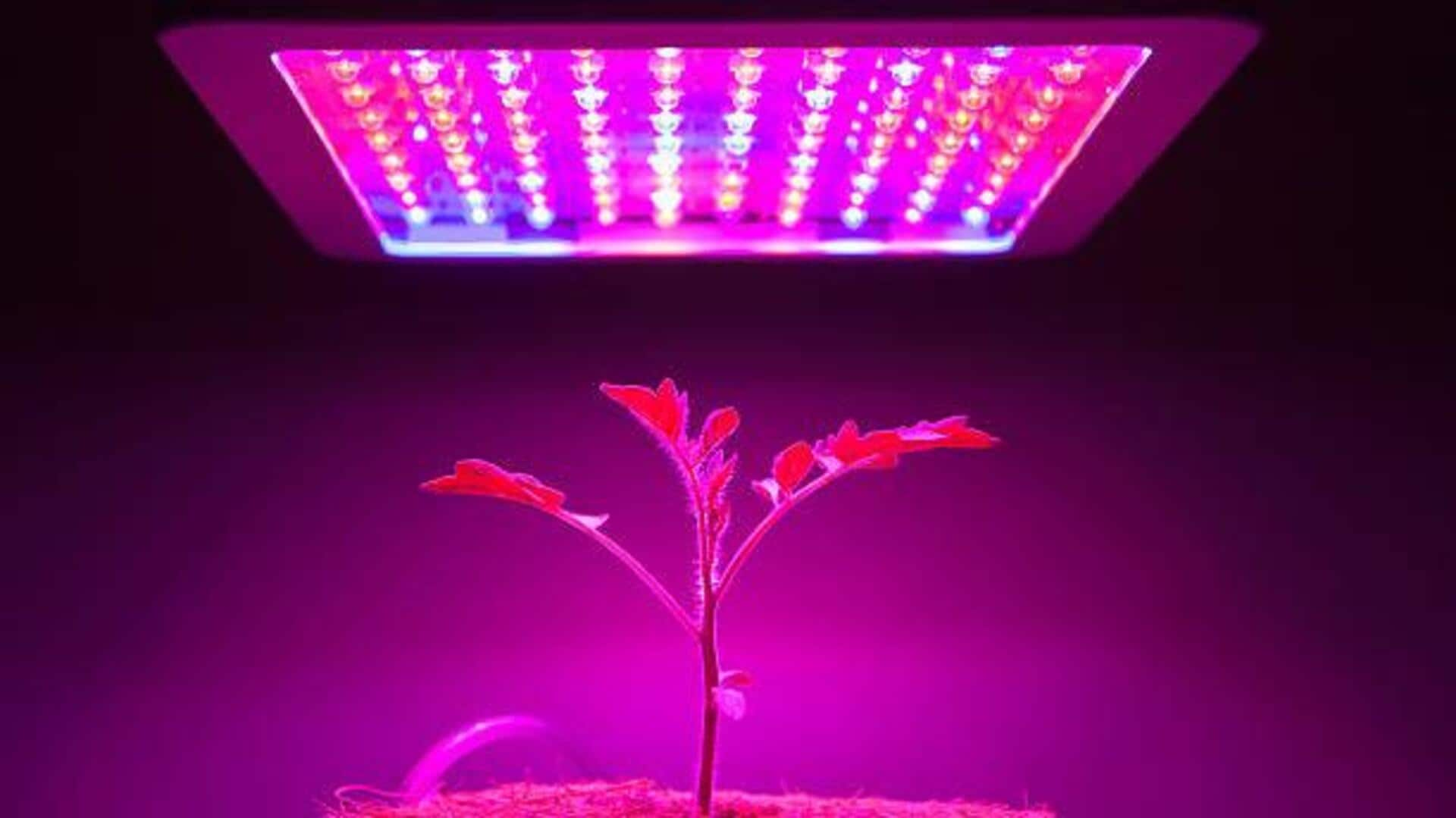
Simple lighting solutions for indoor gardening
What's the story
With the right lighting solutions, indoor plants can flourish even in spaces devoid of natural light. While fluorescent lights are a common method, there are some innovative options that can actually do wonders for plants. These unusual lighting solutions not only give the right light spectrum but also add aesthetic value to your indoor space. Here's how you can let your plants flourish without natural light.
LED option
LED grow lights
LED grow lights provide a versatile and energy-efficient solution for your indoor plants. They emit specific wavelengths of light essential for photosynthesis, encouraging healthy growth. Unlike traditional bulbs, LEDs emit less heat, so you don't have to worry about overheating your plants. They also have a longer lifespan and use less electricity, making them cost-effective in the long run. Plus, with adjustable settings, you can customize the light intensity for different plant species.
Fiber optic
Fiber optic lighting
Fiber optic lighting is an interesting way to light up indoor plants without actually producing heat. The system employs optical fibers to carry light from a distant source right into the plant area. It gives you a precise control over where and how much light you want to put, all without heating up the foliage. Fiber optic systems are especially handy in heat-sensitive plant homes or aesthetic environments.
Solar tubes
Solar tubes
Solar tubes capture sunlight from outside and channel it into the interiors through reflective tubing. This method provides natural daylight to those areas that don't have windows or direct access to sunlight. Solar tubes are also energy-efficient, as they don't consume electricity during the day and keep your plants on a consistent light cycle throughout the day.
Smart systems
Smart lighting systems
Smart lighting systems blend tech with horticulture by leveraging sensors and automation features to optimize plant care routines. They automatically adjust brightness levels according to ambient conditions, such as time of day or changes in weather outside, ensuring optimal growth conditions at all times. The best part? This happens without you having to intervene manually, saving both effort and money. Long-term investments made initially in setting up these advanced setups indoors pay off.